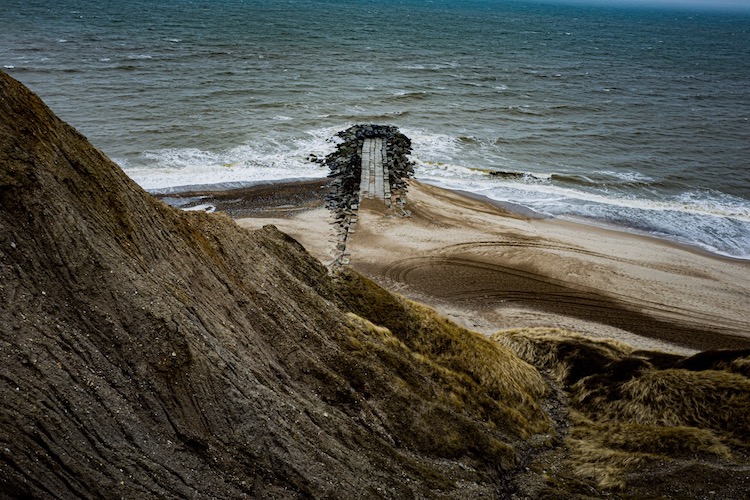The PhD project “The Dynamic Landscape of the West Coast” aims to investigate adaptive methods for climate-proofing a changing coastal landscape through spatial scenarios. Through design proposals incorporating ecological thinking, I will use scenarios to explore alternative futures that challenge the human-centered approach to climate adaptation. The project aims to develop new climate adaptation strategies that can create synergies between various societal objectives and respond to the uncertainties created by climate change. It seeks to explore how landscape architecture can be developed to create entanglements between nature and humans in space and time. The images of the future it will create are important as a shared experience to create a basis for discussion and to question the current way of thinking.
On the west coast, we as a society are attempting to control a natural process that erodes the coast due to the significant influences from littoral currents that are constantly at play. It is a process impossible to stop, thus a constant struggle requiring incredible resources. Furthermore, climate change will only exacerbate erosion, necessitating even more resources to maintain a status quo in the future. Alongside private property rights and the expectation that the state protects citizens from disasters, a paradigm has been created within coastal protection where there is very little room for the coast and water to move without human intervention.
The areas around the west coast must also contribute to achieving other objectives set by the government regarding CO2 reduction, biodiversity, energy, and settlement. Currently, these are not integrated into a comprehensive strategy for the west coast, potentially missing significant synergies. All these measures have a spatial impact on the landscape, and if not integrated, they can lead to a visually fragmented landscape.
This project is based on the hypothesis that with ecological thinking in the design and planning of climate adaptation projects, where different requirements are combined, synergies can be created. Emphasis is placed on designing for a longer time horizon by using adaptive methods from landscape architectural design practice. This approach can lead to a coastal landscape that is more resilient to future uncertainties, has a better environmental impact, and has greater spatial quality, thereby improving human habitation on the west coast.
The research field focuses on approximately a 100-kilometer stretch along the Jutland west coast, between Nymindegab and Thyborøn. Within this stretch, the focus is on the coastal zone, ranging from approximately elevation -10 to +10. This is a diverse area, with dune landscapes, cultivated areas, summer houses, and towns, where current and future impacts from water will have the most significant effect regardless of administrative boundaries. It is a high-energy coast facing the North Sea, making the coastal zone highly susceptible to erosion, storm surges, and inland flooding. Therefore, the study must also consider the broader drainage areas and the overall dynamics of the North Sea and the coastal zone.
Supervisors
- Stefan Darlan Boris
- Katrina Wiberg
KONTAKT
Relateret
MÅSKE ER DU OGSÅ INTERESSERET I DETTE





 Byggepladsfoto fra transformationen af Elefanthuset. Foto: LETH & GORI
Byggepladsfoto fra transformationen af Elefanthuset. Foto: LETH & GORI